I. Introduction
Imagine you’re rushing through a bustling airport, trying to catch a connecting flight. With a backpack as your carry-on luggage, you can easily weave through the crowds, your hands free to hold your boarding pass or a coffee. This simple scenario showcases the convenience that backpacks bring as carry-on luggage during travel.
This article aims to offer you a comprehensive guide on every aspect of choosing, using, and maintaining backpacks for carry-on purposes. Whether you’re a frequent traveler or just planning a weekend getaway, this guide will equip you with the knowledge you need to make the most of your backpack.
II. The Advantages of Backpacks as Carry-on Luggage
Flexibility and Convenience
Backpacks provide the luxury of hands-free movement. You can effortlessly navigate through crowded airports, train stations, or busy city streets without the hindrance of dragging a suitcase. Additionally, they offer quick access to your items. Need to grab your phone, wallet, or a snack on the go? You can do so without having to stop and fumble with the latches of a large suitcase.
Space and Capacity
Modern backpack designs are cleverly crafted to offer adequate room for essentials. For short trips or quick getaways, you’ll find that most backpacks can comfortably hold your clothing, toiletries, and other necessities. Some backpacks even come with expandable compartments, allowing you to pack a bit more when needed, such as if you pick up some souvenirs during your travels.
Comfort
Good backpacks feature an ergonomic design that significantly reduces strain on your body. Padded straps and back panels cushion your shoulders and back, making it easier to carry the backpack for extended periods. Moreover, backpacks distribute the weight evenly across your body, ensuring a more comfortable carrying experience compared to lugging a heavy suitcase in one hand or over your shoulder.

III. Selecting the Right Backpack
Size and Airline Requirements
Most major airlines have specific length, width, and depth restrictions for carry-on luggage. For example, some airlines may limit the carry-on size to around 22 x 14 x 9 inches. To ensure your backpack meets these requirements, measure it accurately. Use a measuring tape to check the dimensions from the widest and longest points, including any external pockets or protrusions.
Capacity and Design
The appropriate capacity of your backpack depends on the length and purpose of your trip. For short trips, a volume of 20 – 40 is usually sufficient. Consider the compartment features when choosing a backpack. A laptop sleeve is essential for those traveling with a computer, while pockets for small items like keys and chargers keep things organized. Additionally, a waterproof and durable design can protect your belongings from the elements and the wear and tear of travel.
Backpack Types
Travel backpacks are designed with features like multiple compartments, and sturdy construction, and often come with features to make them more comfortable for long trips. Daily backpacks, on the other hand, are usually more streamlined and suitable for carrying your daily essentials to work or school. Outdoor backpacks, such as those for hiking and camping, have special features like adjustable suspension systems, water bottle holders, and attachment points for gear.
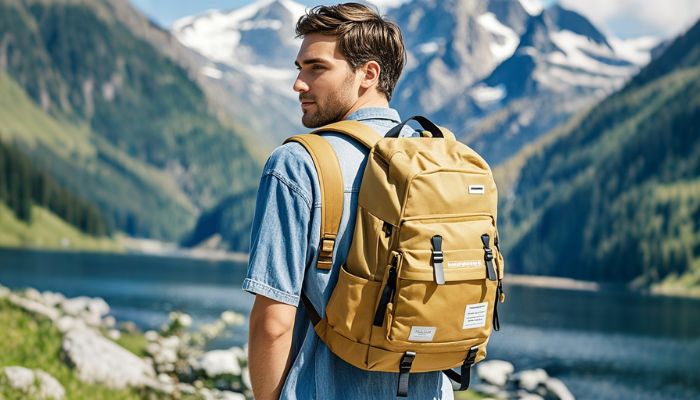
IV. Practical Functions of Backpacks
Compartment and Organization System
The internal compartments of a backpack play a crucial role in keeping your items organized and easily accessible. You might have a separate compartment for your clothes, another for electronics, and a dedicated space for toiletries. External pockets are handy for quick-grab items. For example, you can store your water bottle in an external side pocket for easy access during a hike or while waiting in line at the airport.
Anti-theft Features
Hidden zippers are a great anti-theft measure as they make it difficult for thieves to quickly access the contents of your backpack. Cut-resistant straps add an extra layer of security, preventing someone from slashing the straps and making off with your bag. RFID-blocking pockets are also becoming increasingly important, protecting your passports, credit cards, and other items with embedded chips from identity theft.
Comfort and Support
Padded shoulder straps are a must for comfort. The thickness and adjustability of the straps can make a big difference in how comfortable the backpack is to carry. Different types of back panels, such as ventilated ones, help keep you cool and comfortable by allowing air to circulate. Adjustable chest and waist belts further assist in distributing the weight evenly and keeping the backpack stable on your back.
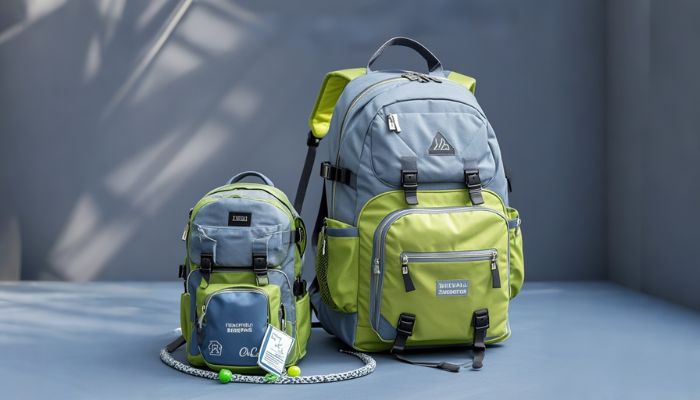
V. Backpack Materials and Durability
Common Materials
Nylon is a popular choice for backpacks due to its strength, lightweight nature, and water resistance. It can withstand the rigors of travel without adding too much weight to your load. Polyester fiber is also commonly used, offering advantages like durability and resistance to abrasions. Other materials like Cordura may also be used in backpack construction, known for their toughness.
Waterproof and Anti-scratch Properties
Waterproof coatings and membranes work to keep the contents of your backpack dry. They prevent water from seeping through the fabric, whether it’s from rain or accidental spills. Anti-scratch finishes are important for maintaining the appearance and integrity of the backpack. They protect the fabric from getting scuffed or torn during travel, ensuring your backpack looks good for longer.
Weight Considerations
Comparing the weights of different materials is essential. A lighter backpack can make a significant difference in your travel experience, especially if you’ll be carrying it for long periods. However, some heavier materials may offer more durability. You need to find the right balance between weight and durability based on your travel needs.
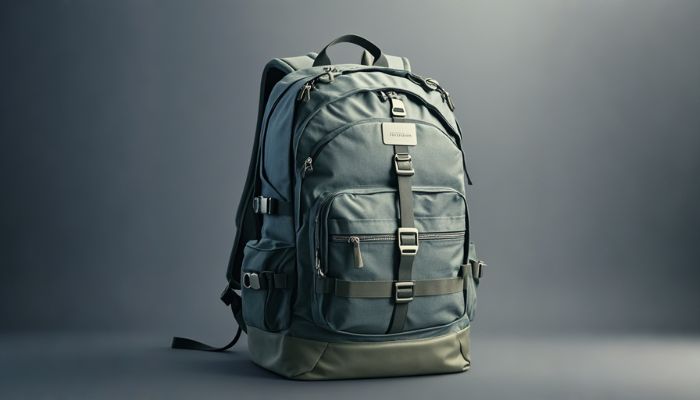
VI. How to Pack a Backpack as Carry-on Luggage
Packing Techniques
Rolling your clothes instead of folding them can save a significant amount of space in your backpack. This method also helps prevent wrinkles. Using compression bags for bulky items like jackets is another great tip. Compression bags reduce the volume of the item, allowing you to fit more in your backpack. Organizing your items by category and packing them in specific compartments makes it easier to find what you need when you’re on the go.
Essential Items Checklist
When packing your backpack as carry-on luggage, make sure to include your travel documents such as your passport and tickets. Electronics like your laptop, phone, and chargers are also essential. Don’t forget your toiletries such as toothbrushes, toothpaste, and any necessary medications. Pack clothing appropriate for the destination and the length of your trip. And if you have any first aid supplies or prescriptions, include those as well.
Liquid and Security Requirements
If you’re traveling by air, you need to be aware of TSA regulations regarding liquids, gels, and aerosols. Generally, you can only carry liquids in containers of 3.5 ounces or less, and all these containers must be placed in a single, clear, quart-sized plastic bag. To pack liquids safely, make sure the lids are tightly closed and place them in an easily accessible part of your backpack for security checks.
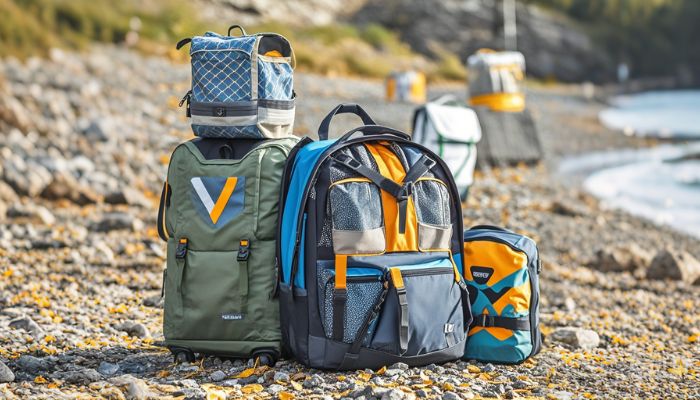
VII. Cleaning and Maintenance of Backpacks
Cleaning Methods
The cleaning method for your backpack depends on the material it’s made of. For nylon backpacks, you can usually use a mild detergent and warm water. Gently scrub the dirty areas with a soft brush. Polyester backpacks can also be cleaned similarly. Spot cleaning is useful for handling small stains or dirt marks. Use a damp cloth with a little detergent to dab at the stain until it’s removed. If your backpack is machine washable (check the label), make sure to use a gentle cycle and cold water.
Maintenance Tips
After cleaning, it’s crucial to dry your backpack properly. Hang it in a well-ventilated area and allow it to dry completely to prevent mold and mildew from forming. When not in use, store your backpack correctly. Empty it of all contents, flatten it if possible, and store it in a cool, dry place to maintain its shape and integrity.

VIII. Backpacks as an Ideal Choice for Travel
Short Trip Performance
Backpacks are extremely convenient for short trips. They allow for quick packing and unpacking, as you can simply throw in your essentials and be on your way. The comfort factor is also high during short trips, as you can easily carry the backpack around town, whether you’re exploring a new city or running errands.
Long Flight Adaptability
Backpacks fit easily into overhead compartments on airplanes, taking up less space than larger suitcases. This means you don’t have to worry about finding space in the overhead bin or having to check your bag. During the flight, you can also access items in your backpack without disturbing other passengers, as you can simply reach over and grab what you need.
Backpack vs. Suitcase
Backpacks have several advantages, such as their mobility. You can easily carry them on your back and move around freely. However, they may have a limited capacity for some trips, especially longer ones where you might need to pack more items. Suitcases, on the other hand, offer a large packing capacity but are less mobile as you have to drag or roll them around.
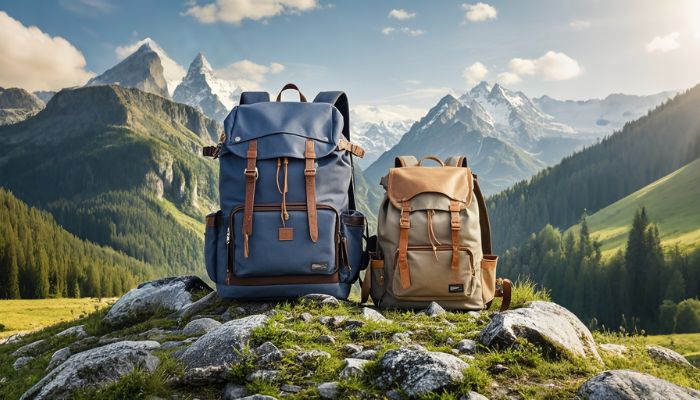
IX. Recommended Backpack Brands and Models
Popular Brands
Osprey is known for its high-quality backpacks with features like excellent suspension systems, multiple compartments, and durable materials. Their models are designed to provide comfort and functionality for various travel scenarios. Nomadic offers innovative designs with features such as modular organization systems and sleek aesthetics. Tortuga specializes in travel backpacks with features like large capacities and efficient packing systems. Other notable brands include Deuter, which is popular for its outdoor backpacks, and Patagonia, known for its sustainable and durable backpacks.
Budget-Friendly Options
Some budget-friendly brands that offer good value for money include High Sierra, which has backpacks with decent compartments and durable construction. Another option is JanSport, which is a well-known brand for its classic backpack designs. When looking for a budget-friendly backpack, look for features like sturdy zippers, multiple compartments, and a reasonable amount of padding on the straps and back panel.
High-End Choices
Luxury backpacks from brands like Gucci or Prada set themselves apart with their high-quality materials, such as premium leather or high-tech fabrics. Their designs are often more stylish and may include unique features like custom hardware or intricate detailing. Those who value both style and functionality and are willing to invest more in their travel gear might benefit from a high-end backpack.
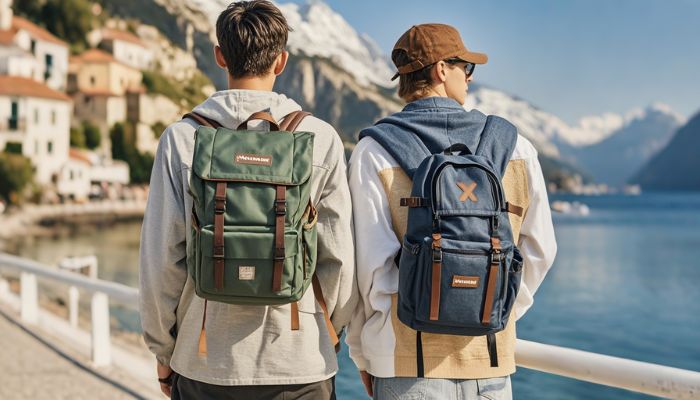
X. Additional Tips and Considerations
Smart Backpacks
Smart backpacks are becoming increasingly popular. Built-in USB ports allow you to charge your devices on the go, which is especially useful during long trips or when you’re out and about. RFID-blocking technology protects your personal information by preventing unauthorized access to the chips in your passports, credit cards, etc. Other smart features may include built-in GPS tracking for added security or Bluetooth connectivity for easy pairing with your phone.
Adapting to Different Travel Styles
For backpacking trips, you’ll want a backpack with a large capacity, a good suspension system, and plenty of attachment points for gear. Business travel backpacks should have a professional look, with compartments for a laptop, documents, and other essentials. For short vacations, a medium-sized backpack with comfortable straps and enough compartments to hold your vacation essentials will do the trick.
XI. Frequently Asked Questions
Backpack Capacity Issues
If your backpack capacity is too small, you can consider using an expandable backpack or packing more efficiently. To estimate the right capacity for a trip, think about the number of days you’ll be traveling, the type of clothing you’ll need, and any additional items like electronics or toiletries.
Fitting All Items in the Backpack
To fit more items in your backpack, you can use external pockets, and compression bags, and organize your items by category. If there’s still not enough room, you may have to leave non-essential items behind or consider getting a larger backpack.
Backpack Check-In Requirements
If your backpack is required to be checked in, make sure to pack it properly. Wrap fragile items carefully and use any available packing materials like bubble wrap. Add identification tags with your name, contact information, and destination. Follow the airline’s procedures for checking in luggage to ensure the safety of the items inside.
XII. Conclusion
In this guide, we’ve covered a wide range of topics related to using backpacks as carry-on luggage. We’ve explored the advantages of backpacks, how to select the right one, their practical functions, materials and durability, packing techniques, cleaning and maintenance, and more. We’ve also provided recommendations on brands and models, as well as answered some frequently asked questions.
By choosing a backpack as your carry-on luggage and following the tips and advice in this guide, you can enjoy a more convenient and comfortable travel experience. So, the next time you plan a trip, consider opting for a backpack to make your journey a breeze.



